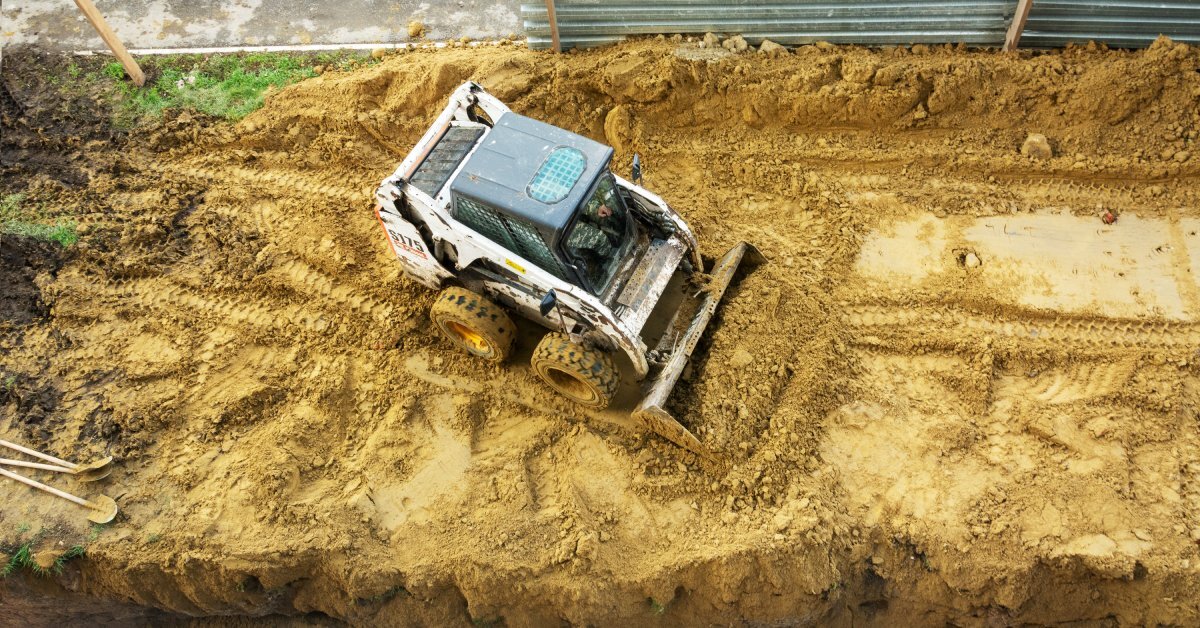How To Properly Tension Tracks on Compact Track Loaders
Jun 2nd 2025
The performance of your compact track loader depends on many factors, including track tension. Misaligned or improperly tensioned tracks can negatively affect performance, efficiency, and longevity, potentially leading to damage and downtime. Correctly adjusting track tension is crucial for keeping your machinery in good condition so that it performs well.
With these insights on how to properly tension tracks on compact track loaders, you’ll maintain the durability of your equipment, enhance its productivity, and avoid common mistakes that could lead to wear and tear. Keeping your loader’s tracks in perfect order is pertinent for every step of your on-site operations.
The tension in a compact track loader’s tracks directly affects its functionality and efficiency. Too tight tracks exert unnecessary strain on the undercarriage, components, and the tracks themselves. Conversely, loose tracks can cause slippage, uneven movement, and accelerated wear on the tracks and undercarriage.
The balance of performance, safety, and cost-effectiveness becomes evident here. Achieving and maintaining this balance demands regular inspections and adjustments, particularly if you operate your compact track loader in varying conditions or environments with debris.
The first step in tensioning a compact track loader’s tracks is identifying when adjustments are necessary. The signs of incorrect tension include unfamiliar noises, irregular track wear, and reduced efficiency. Tracks that frequently derail or slip also indicate that track tension needs your attention.
Pay close attention to the undercarriage components, as improper track tension can lead to excessive wear or damage over time. Recognizing these warning signs will allow you to act quickly, minimize potential downtime, and prevent costly repairs.
Additionally, overlooking signs of incorrect tension may lead to safety risks, as excessive strain on the machinery can compromise its stability on uneven terrain. Proactive identification protects equipment and operators from potential hazards.

Before adjusting the tension, prepare your compact track loader safely. Park the machine on a level surface, and engage the parking brake to prevent movement during the adjustment process.
Clean the tracks and undercarriage thoroughly before inspecting or adjusting the tension. Dirt, mud, or debris trapped within the tracks can give false readings and hinder effective adjustments. A high-pressure washer or compressed air can dislodge obstructions in the tracks and undercarriage.
Gauge the current tension levels of the tracks in order to adjust them effectively. Different loader brands and models may have various methods to measure this, so consult your machinery manufacturer’s guidelines to determine the ideal procedure.
Typically, you’ll measure the track sag by checking the distance between the track and the bottom of the undercarriage at the midpoint. This measurement should ideally fall within the range specified by the manufacturer. Adjustments must bring it back into alignment if it’s outside the acceptable range.
Adjusting track tension requires precision, patience, and adherence to manufacturer instructions. Start by locating the tensioning system on your compact track loader. Most loaders have either grease-adjustable or mechanical systems for tensioning. Identify which system your machinery uses before proceeding.
If you’re working with a grease-adjustable system, locate the undocking valve, which controls the hydraulic grease. Applying grease tightens the tracks, while releasing grease loosens them.
For mechanical systems, a bolt or screw mechanism adjusts the tension. Rotate it clockwise to tighten and counterclockwise to loosen, and make adjustments incrementally. After each adjustment, measure the track sag until it falls within the recommended range.
Always inspect the system for leaks or damage before and after adjustments. Hydraulic grease systems can develop leaks that affect tension stability. By identifying issues during the process, you can prevent recurring problems and ensure the settings hold over time.

Improper track tensioning is one of the most overlooked causes of damage and inefficiency in compact track loaders. A common mistake operators make is measuring tension without removing debris from the tracks. This mistake leads to inaccurate readings and incorrect adjustments.
Failure to refer to the manufacturer’s guidelines is another pitfall, as each loader model has specifications that it must follow for optimal functionality. Making large adjustments instead of incremental changes could cause issues, such as over-tightening or under-tightening. Always proceed gradually, measuring and rechecking after each adjustment.
Operators might also neglect to account for environmental factors. Tracks tend to tighten slightly when working in warm environments and loosen in cold ones. Adjust the tension accordingly to maintain balance across various conditions.
Finally, never ignore regular maintenance logs. Detailed records of adjustments and inspections allow you to identify patterns in track tensioning needs. These insights help you address issues before they escalate and keep a consistent maintenance routine over time.
Once you’ve achieved the correct track tension, create a regular maintenance routine to support the machine’s longevity and optimal performance. Inspect the tracks and undercarriage regularly, particularly before and after heavy usage. Keep the tracks clear of mud, rocks, and debris, which can cause premature wear and misalignment.
Lubricate moving parts as the manufacturer recommends to reduce friction and minimize wear. You could also conduct weekly or biweekly checks to monitor tension levels, depending on how frequently you use the equipment and under what conditions. Taking proactive measures helps you identify issues before they worsen.
While adjusting track tension yourself is manageable with guidance, you should seek out the expertise of equipment professionals for complex issues. Due to their experience, they can make appropriate adjustments with the correct parts, protecting your investment. At Tractor Zone we provide
Knowing how to properly tension tracks on a compact track loader is simple for many operators, but other might make mistakes. These small issues have a profound impact on the performance and durability of your compact track loader. Neglecting tracks can lead to operational downtime, expensive repairs, and safety risks. By following these steps, you can keep your loader in top condition and extend its lifespan.
Regularly inspecting tension levels, acting when necessary, and following manufacturer guidelines will keep your equipment operating at peak efficiency. Avoid shortcuts, and invest time in adjustments; your equipment will reward you with reliable performance!
Looking for expert guidance on maintaining your loader? Contact Tractor Zone today to learn about tailored maintenance and advice on getting parts for your equipment.